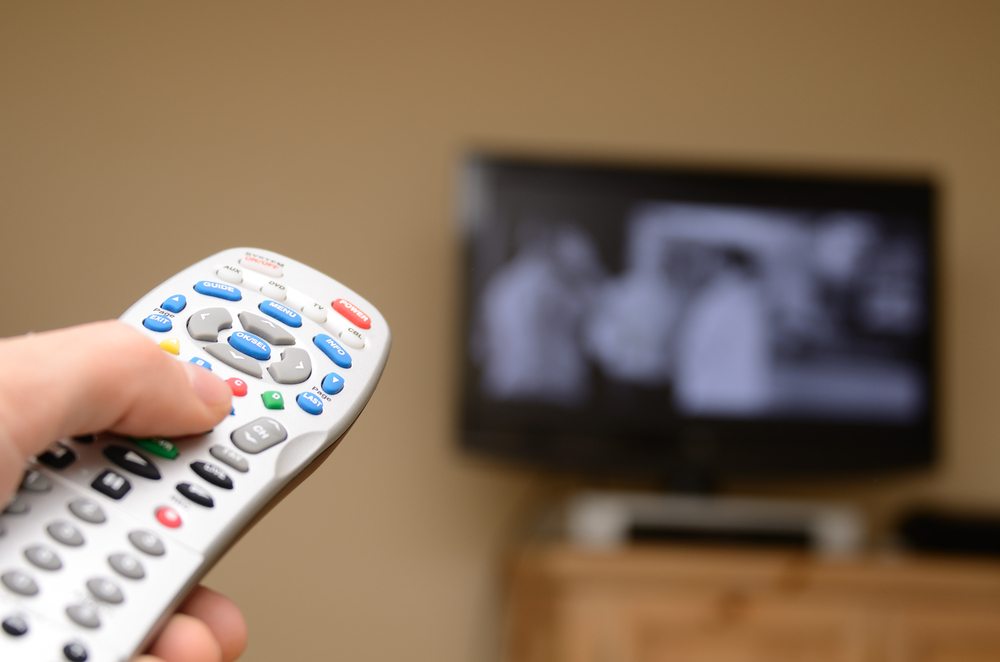Are you completely satisfied with your current internet service? Regardless of your answer,the fact remains that you are very likely paying too much for your internet service.
15 November, 2024 | Posted by:
Category: Tips | No Comments

Finding ways to reduce your internet bill can free up money for other expenses. Here are seven creative strategies to help you save on your internet costs:
Often, a simple call to your internet service provider (ISP) can result in a lower rate. Highlighting competitor prices or mentioning your intention to switch can be persuasive.
Combining your internet with other services like TV and phone can lead to discounts. Many ISPs offer bundled packages that are cheaper than purchasing services separately.
ISPs frequently run promotions for new customers. Keep an eye out for these deals, and don’t hesitate to switch providers if a better offer is available.
Consider eliminating traditional cable TV in favor of streaming services. Many streaming platforms offer high-quality content at a fraction of the cost of cable.
If you live close to friends or family, consider sharing an internet connection and splitting the cost. Ensure your plan has sufficient bandwidth to support multiple users.
Reduce your data usage to avoid overage charges. This includes lowering video streaming quality, turning off automatic updates, and using data compression tools.
Ask your ISP about loyalty discounts. Long-term customers sometimes qualify for special rates or perks that aren’t advertised.
Are you looking for the best ways to improve your home Entertainment experience? The first place to start is with your internet service provider and home internet connection. High speed internet is essential to any home theatre set up. This article will tell you why.
14 November, 2024 | Posted by:
Category: Tips | No Comments

Transforming your living space into a cinematic haven doesn't have to be complicated. Here are five essential tips to enhance your home theatre experience:
Choose the right TV size for your room and mount it at eye level for the best viewing angle. The ideal viewing distance is about 1.5 to 2.5 times the diagonal screen size. For instance, a 65-inch TV should be viewed from approximately 8-13 feet away.
Invest in a quality surround sound system to immerse yourself in the audio experience. Position speakers strategically around the room for optimal sound distribution. A 5.1 or 7.1 system can significantly enhance the audio quality, with the subwoofer placed near the center for deep bass sounds.
Ensure your seating is comfortable and positioned correctly. Recliners or a cozy sofa can make a significant difference. Consider tiered seating if space allows, and add some plush throws and cushions for added comfort. Ergonomic seating can help you enjoy longer movie sessions without discomfort.
Implement adjustable lighting to reduce glare on the screen and create an authentic theatre ambiance. Dimmer switches, smart lighting, or blackout curtains can help achieve the perfect lighting conditions. Consider ambient lighting behind the screen to reduce eye strain during extended viewing sessions.
Use high-quality streaming devices and subscribe to multiple streaming services to access a wide range of content. Devices like Roku, Apple TV, or Amazon Fire Stick provide smooth streaming and access to various platforms. Ensure your internet connection is robust to prevent buffering, and explore different streaming services to find the best content for your preferences.
If you have any questions or need assistance, feel free to contact us at 866-739-5146 Our team is here to help you create the perfect home theatre setup.
Fortunately, it is usually possible to improve your internet speed with a bit of effort as patience. So as long as you've already tried the famous (and surprisingly effective) trick everything off.
14 November, 2024 | Posted by:
Category: Tips | No Comments

Slow internet can be incredibly frustrating, especially when you’re trying to stream a movie, participate in a video call, or simply browse the web. Here are five possible reasons why your internet might be running slowly and what you can do about it.
Internet speeds can slow down during peak usage times when many people in your area are online simultaneously. This is common in the evenings when people are streaming videos or playing online games. To check if this is the issue, try using your internet at different times of the day to see if there is an improvement.
Using outdated modems or routers can limit your internet performance. Modern internet speeds require modern equipment to handle the data flow efficiently. Consider upgrading to a newer model to ensure you’re getting the speeds you’re paying for.
For more details on improving your setup, check out our guide on bundling internet services.
Physical obstructions like walls and electronic interference from devices like microwaves can weaken your Wi-Fi signal. Position your router in a central location, away from obstructions and other electronic devices. If possible, use a wired Ethernet connection for a more stable connection.
Having too many devices connected to your network can slow down your internet speed. Each device uses a portion of your bandwidth, which can be especially noticeable during high-usage activities like streaming or gaming. Disconnect devices that you aren’t using or consider upgrading your internet plan.
Sometimes, the problem might be with your internet service provider (ISP). Maintenance work, network congestion, or other technical issues on the provider’s end can affect your internet speed. Contact your ISP to see if there are any known issues in your area and ask if they can provide a solution.
Identifying the cause of slow internet can help you take the necessary steps to improve your connection. Whether it’s upgrading your equipment, optimizing your Wi-Fi setup, or switching to a more reliable provider, there are several ways to boost your internet speed.
Discover the top 5 compelling reasons why cable TV remains essential in San Antonio. Explore unbeatable entertainment options & stay connected with local news.
26 December, 2024 | Posted by:
Category: Tips | No Comments

In an age where streaming services are becoming increasingly popular, you might wonder if cable TV is still worth it. While streaming offers many benefits, there are several reasons why cable TV remains a valuable option for many households. Here are five reasons you still need cable TV.
One of the main reasons to keep cable TV is for live sports and events. Major sports networks like ESPN, Fox Sports, and NBC Sports often broadcast games and events that are not available on streaming platforms. If you’re a sports fan, having access to live broadcasts and dedicated sports channels is a significant advantage. Check out Spectrum and Xfinity for comprehensive sports packages.
Cable TV offers a wide variety of channels, including news, entertainment, lifestyle, and children's programming. This variety ensures that there’s something for everyone in the household. While streaming services offer a lot of content, they often lack the channel diversity that cable provides. Providers like Cox and Optimum offer extensive channel line-ups to cater to all tastes.
Cable TV is known for its reliability. Unlike streaming services that depend on internet connectivity, cable TV provides a consistent viewing experience without buffering or interruptions due to network issues. This reliability is especially important during severe weather conditions when internet services might be disrupted. For dependable service, consider providers like AT&T and Frontier.
Many cable providers offer bundling options that include internet and phone services, often at a discounted rate. Bundling can save you money and simplify your billing by consolidating services under one provider. Providers like Spectrum and Xfinity are known for their attractive bundle deals.
Cable TV provides access to local channels and news networks, which are crucial for staying informed about community events, weather updates, and emergency broadcasts. While some streaming services offer local channels, the coverage is not as comprehensive as cable TV. Providers like Cox and Optimum ensure you stay connected to your local community.
While streaming services offer a lot of great content, there are still several compelling reasons to keep cable TV. From live sports and events to a wide variety of channels, reliable service, bundling options, and access to local news, cable TV remains a valuable option for many households. Consider your viewing needs and preferences to determine if cable TV is right for you.
Discover the essential insights you need before purchasing your next TV. Explore our guide to the 5 key factors to consider when buying a new television.
14 November, 2024 | Posted by:
Category: Tips | No Comments

Buying a new TV can be an exciting but overwhelming experience with so many options available. To help you make an informed decision, here are five key things to know before purchasing your next TV.
One of the first things to consider is the size of the TV screen. The right size depends on the room where you’ll place it and how far you’ll be sitting from the screen. A general rule of thumb is to multiply the viewing distance (in inches) by 0.84 to get the recommended screen size. For example, if you sit 8 feet (96 inches) away from the TV, a 55-inch screen would be ideal.
Resolution refers to the number of pixels that make up the picture on the screen. The more pixels, the sharper and clearer the image. Here are the most common resolutions:
For more details, check out our guide on Who's who in cable
There are different types of display technologies, each with its advantages:
Most modern TVs come with smart features, allowing you to connect to the internet and access streaming services like Netflix, Hulu, and Amazon Prime Video. Consider what smart features you need and check if the TV’s operating system is user-friendly and compatible with your favorite apps. For tips on maximizing your smart TV experience, read our smart TV tips.
Ensure the TV has enough ports to connect all your devices. Common ports include HDMI, USB, and optical audio. HDMI ports are crucial for connecting devices like gaming consoles, Blu-ray players, and streaming devices. If you have a soundbar or external speakers, check for audio output options as well.
For more information on TV connectivity options, visit our website.
Buying a new TV involves considering various factors such as screen size, resolution, display technology, smart features, and connectivity. By understanding these key aspects, you can make an informed decision and choose the best TV for your needs. Happy shopping!